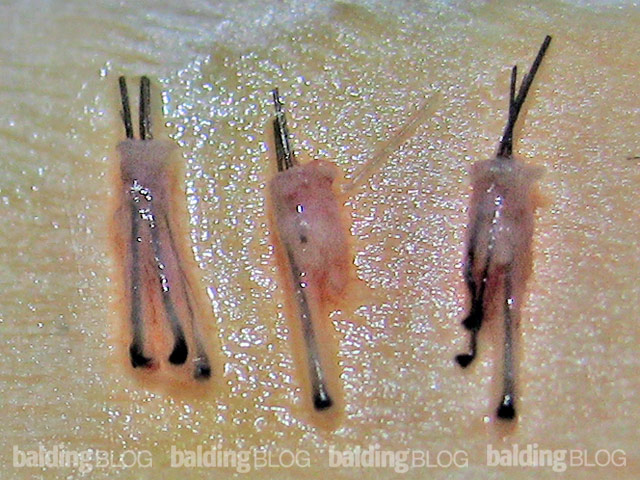Hair multiplication has been a hot topic in hair restoration field in the last few years and many patients with severe hair loss hope that using this technique they can get back a full head of hair without worrying about donor supply limitation.
I think it would be helpful to review a recent article in the journal of dermatologic surgery on a similar subject: In Vivo Follicular Unit Multiplication: Is It Possible to Harvest an Unlimited Donor Supply? Ergin ER, MD, Melike Kulahaci, MD, and Emirali jamiloglu, MD 32:11:NOVEMBER 2006.
The article discusses a method for multiplication of hair follicles without a need to culture them. The authors have removed hair follicles using a FUE technique and cut them in different levels, trying to see if two hairs can be obtained out of one hair follicle. The researchers implanted the upper parts of these partial grafts in recipient area and the remnants back in donor site. The procedure was done on five male patients. Hair follicle counts and thickness analysis were performed after 1 year by a third party investigator.
Results of the hair count and thickness analysis showed that the growth could be seen in both the upper and lower parts of the cut follicle. From the grafts that were cut in upper one third, only 20 percent showed growth in the recipient site, while 84 percent of the remnant that were left behind, grew in the donor area. There was 29% growth rate in recipient area in the grafts, which were cut in halves vs. 68% growth of the remnants of these same grafts in donor area. Finally 41% of the grafts cut in upper two third grew hair in recipient area vs. 53% growth in the remnants of the same hair follicles in the donor area that they were taken from.
The authors concluded that hair follicle growth is complex and hair follicle contains stem cells in different levels, which could participate in the growth of new hairs. We know that stem cells are located in the bulb of hair follicles and in the outer sheath, in the middle of the hair shaft where the sebaceous gland is located. The authors assumed that each half of the follicle contains a stem cell reservoir that would potentially allow the growth of a new hair. The rate of the growth in a new hair follicle is reported to be 41 percent at best. All of the partial hair follicles grow thinner hair in comparison with intact hair follicles that were transplanted in the same patients.
The authors suggest that these sub-units of hair have value but they provide a lower yield than growth of hair from intact grafts both in numbers of viable hairs as well in the actual thickness of the hair that do grow. They also suggested that FUE is a promising technique is a mechanism to get the hairs for an eventual hair multiplication process once it is worked out, but it should be avoided if the transaction rate is higher than 10 percent.
Of course, this is not the only study on this subject and some other studies reported comparable results. As we have suggested in our previous publications over and over again, FUE is a great technique for the patients who have small donor area requirement, a limited balding area, a tight scalp and the ones with a contraindication for removing a strip. FUE should not replace strip technique in standard cases.
![]()
![]()



